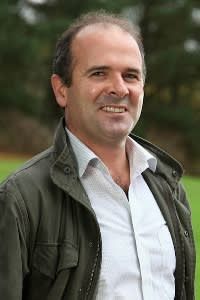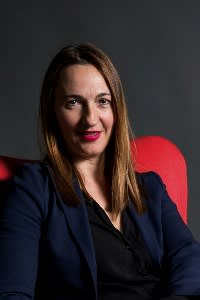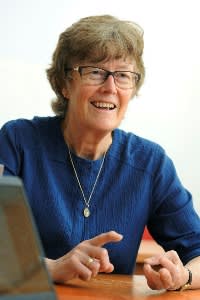Until recently, the first-year business and economics syllabus that Carlos Cortinhas had to teach could, by his own admission, “be a drag”. Undergraduates worked through textbooks and lectures detailing indifference curves and market equilibrium, memorising the basic theories and models of economics to reach the next stage of their degrees.
Now, the class taught by the associate professor of economics at Exeter university in the UK consists more of debate and discussion than rote learning, and students talk about climate change before they even learn about supply and demand.
This novel approach uses Core (Curriculum Open-access Resources in Economics) — a fresh approach to teaching that grounds economics in the real world.
Started a decade ago and now used in 310 universities in 68 countries, it flips conventional economics teaching on its head, beginning with thorny global problems that concern young people and exploring how a diverse range of theories and models can help solve them.
“It’s completely changed how we teach,” Cortinhas says. “The students become more engaged, interactive. It’s a real joy.”
Diverse, practical and accessible, Core exemplifies a new type of teaching — one that is especially at home in business departments.
As business and management education has grown, so has economics teaching in business schools. This has created new opportunities for research collaboration, practical work and teaching for new audiences — all of which has sown the seeds of fresh thinking about a traditionally conservative and theoretical subject.
“There’s a difference to how you teach economics in a business school,” says Michael Kitson, senior lecturer in international macroeconomics at the University of Cambridge Judge Business School in the UK. “It’s much more open to pluralistic ways of thinking; it’s only one part of a wide range of disciplines.”
Kitson looks back fondly on years where Marxist, Keynesian and neoclassical economists worked side by side, but believes traditional economics departments have lost some of their diversity.
Now he feels more at home in the business school, where academics from a wide range of disciplines work on practical challenges. “That pluralism in economics departments has gone,” he says. “Where that pluralism now exists is in business schools.”
A British Academy paper on business studies, released last month, found that business and management is interdisciplinary almost above all else — encompassing subjects from finance and economics to sociology and geography, and a large and diverse student body.
In 2019-20, one-sixth of undergraduates and one-fifth of postgraduates in the UK were enrolled on a business and management course, of whom 39 per cent were international students and about 20 per cent from a black, Asian or minority ethnic background.
Lisa Magnani, professor of economics at Macquarie University in Australia, says the broad appeal of business studies has forced economics teachers to think more creatively.
“A dimension of economics is a lack of diversity — the ability to scare women away, or to draw students from certain types of socio-economic backgrounds,” she says. “Both at undergraduate level, and at the MBA level, we’ve turned economics teaching upside down . . . the idea is applied and engaged economics.”
Broader audiences and real-world problems mean economics teaching must recognise a wider range of models and approaches, course leaders say. Today, both Generation Z undergraduates and MBA students are more likely to be progressive and socially conscious, if not always economically leftwing.
“If we went back 15 years ago, MBA students were primarily looking for the skills and education that would allow them to progress in their careers,” Kitson points out. “That’s changed. Increasingly, they’re wanting to understand the bigger picture in terms of global challenges — inequality, climate change, racism. These are much more prominent than trying to maximise [their] income.”
Progressive views may be increasingly in demand in business departments, but they do not always have an easy ride.
In the UK, the University of Leicester faces an international boycott over cuts that meant researchers specialising in critical and leftwing approaches to business and economics were targeted for redundancy.
The university says it is placing greater emphasis on big data, analytics and artificial intelligence. It aims to “focus on research on contemporary issues where there is clear demand from users of research and from funders”, to equip graduates with the “relevant skills to drive positive impact around the world”.
However, David Harvie, a political economist and one of those facing redundancy, says cuts to critical thinkers have destroyed the possibility of a genuinely diverse and challenging business curriculum at Leicester.
“I think it will die out,” he says. “I feel like some of it is based on the idea that someone who goes to Leicester isn’t able to study humanities. But look at people now rediscovering Keynes, Marx — people do need history.”
Other educators argue that new forms of economics teaching do not go far enough. At Rethinking Economics, a student and academic-led movement to reshape the subject, co-director of operations Tree Watson says while the real-world aspect of Core opens up new perspectives, genuinely pluralist theory is lacking. “It’s still neoclassical economics at the end of the day,” she says.
But Wendy Carlin, professor of economics at University College London and a project director at Core, argues that the new ways of teaching economics are being embraced not just in business schools but wherever the subject is taught. With impressive results, too. A 2020 study found the marks of students who took Core averaged 17 per cent higher than those who did not follow the syllabus, and not only economics students felt a boost but also those studying finance and management subjects.
Carlin describes the Core approach as starting not from the assumptions of perfect information and models, as in traditional economics teaching, but in the way the real world works, with all its imperfections.
That, she hopes, will not only make economics more accessible for students, but will also help create new theories and frameworks for the challenges of tomorrow.
“These different concepts of capital and all the measurements of [gross domestic product] came out of the Great Depression — we face different problems now,” she says. “There’s an appetite for really revisiting how we view the economy . . . We’ve shown it’s possible, but there’s a lot more to be done — and must be for universities to maintain their relevance.”
Convention flipped: real-world economics gains ground in business studies - Financial Times
Read More




